NotebookLM is one of the most popular AI tools by Google, which has gained significant popularity and a massive user base since late 2024. Google seized the opportunity and continued to improve the tool over time by improving the AI tool and adding new features that the majority of its audience liked. Now, with its latest update, Google has given this AI-powered research assistant the ability to conduct in-depth research, allowing users to add diverse, high-quality sources and broaden the types of content they can analyze, including spreadsheets and Word documents.
What is deep research?
Deep research is one of the most popular AI agents of 2025. Google's deep research in NotebookLM is a Gemini-powered agent that plans the entire research process, searches for information on the web, and assembles a source-grounded report. By adding this new feature, NotebookLM will actively help you find new information and connect ideas in ways that were previously impossible.
At the same time, Google is expanding the types of files NotebookLM can work with, now including Google Sheets, Drive files as URLs, Images, PDFs from Google Drive, and Microsoft Word documents, so the tool helps you understand, create, and innovate.
Julius AI: Your personal AI data analyst that connects to your data, lets you ask complex questions in plain English to receive insightful analysis in seconds, no coding required.
Here's a breakdown of what's new with Google's NotebookLM:
NotebookLM was originally pitched as an AI "thinking partner" that you ground in your own sources: documents, PDFs, slides, and web pages, which it could then explain, summarize, and remix. With this update, NotebookLM, instead of assuming you've already collected everything, can now help you find the sources in the first place and conduct the research.
- Deep Research agent that plans queries, scans hundreds of websites, and compiles a structured report with citations.
- Two research modes:
- "Fast Research" for quick scans/
- "Deep Research" for richer, more exhaustive briefings.
- The reports and their sources can be dropped directly into your notebook and combined with your own uploads.
- Broader file support, including Google Sheets, Microsoft Word (.docx), images of handwritten notes or brochures, PDFs from Drive via URL, and more.
Together, those pieces make NotebookLM an end-to-end research hub that can help you collect material, reason over it, and turn it into something usable, such as a memo, a study guide, a client brief, or a slide deck.
How to use Deep Research Agent in NotebookLM by Google:
Step 1: The entire process is simple and easy to use. Just visit Google's NotebookLM and create an account or log in.
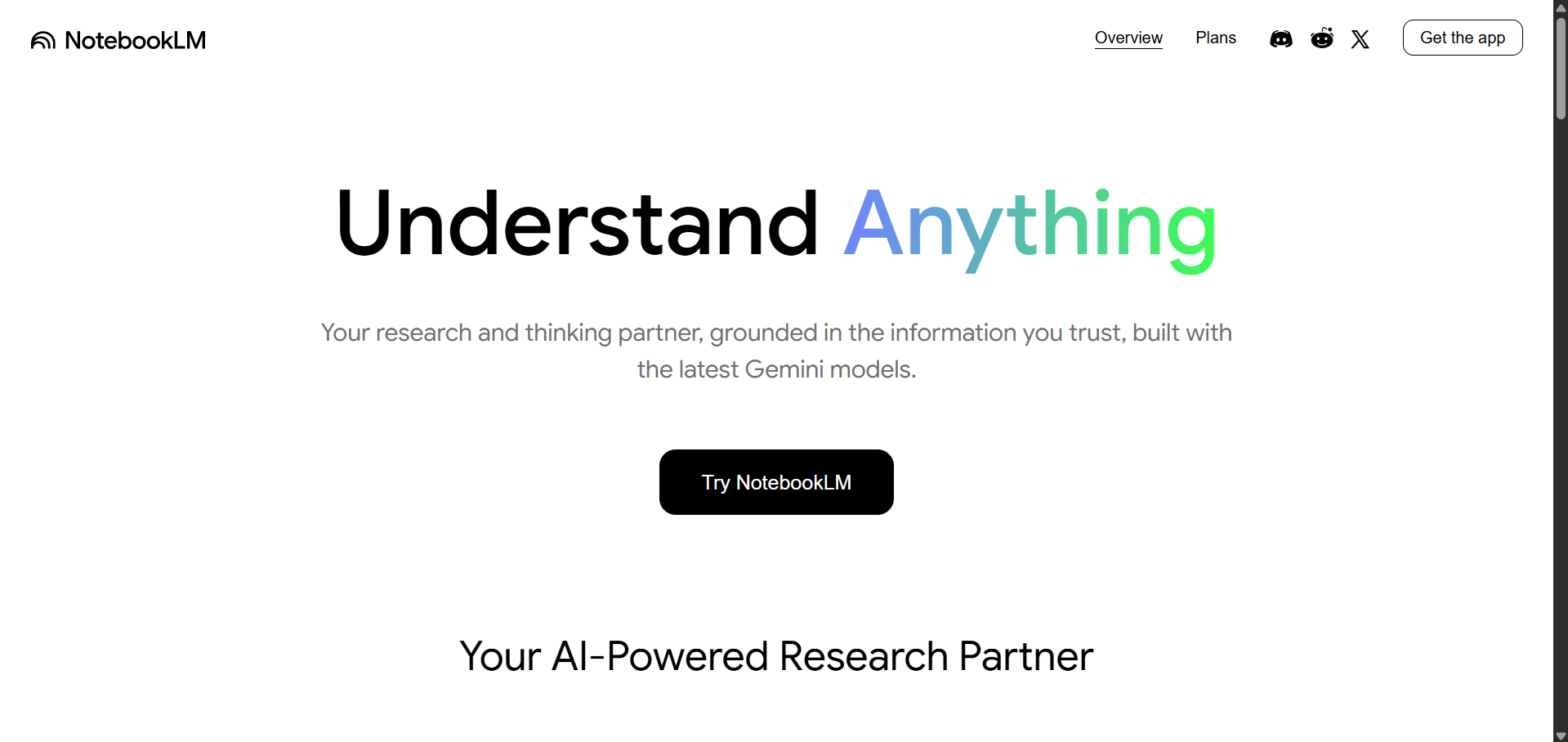
Step 2: Now, simply open an existing notebook or start with a new notebook.
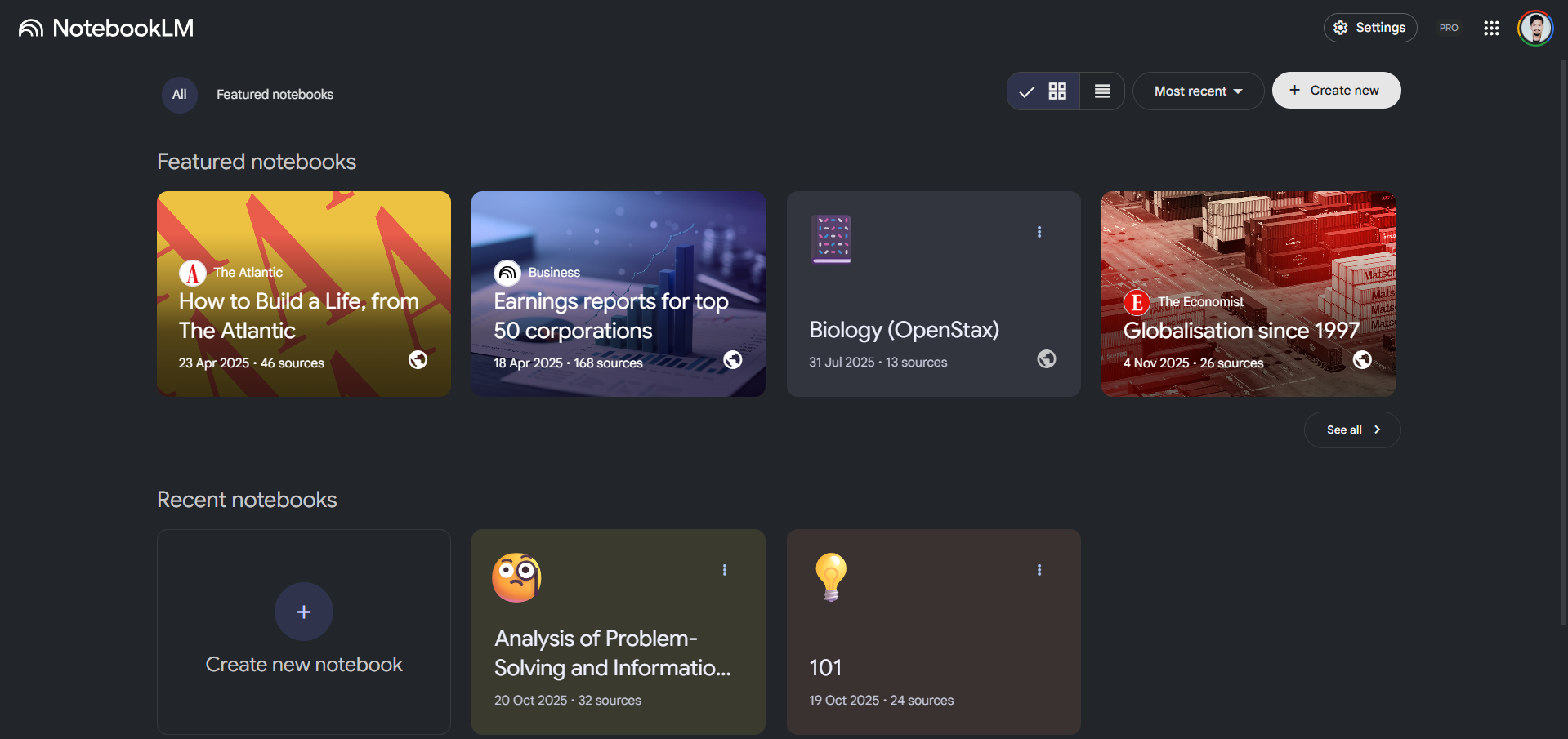
Step 3: If you have resources to add, you can, or you can directly jump into the main chat interface like me. On the left-hand side, you will see the Fast Research and Deep Research options.
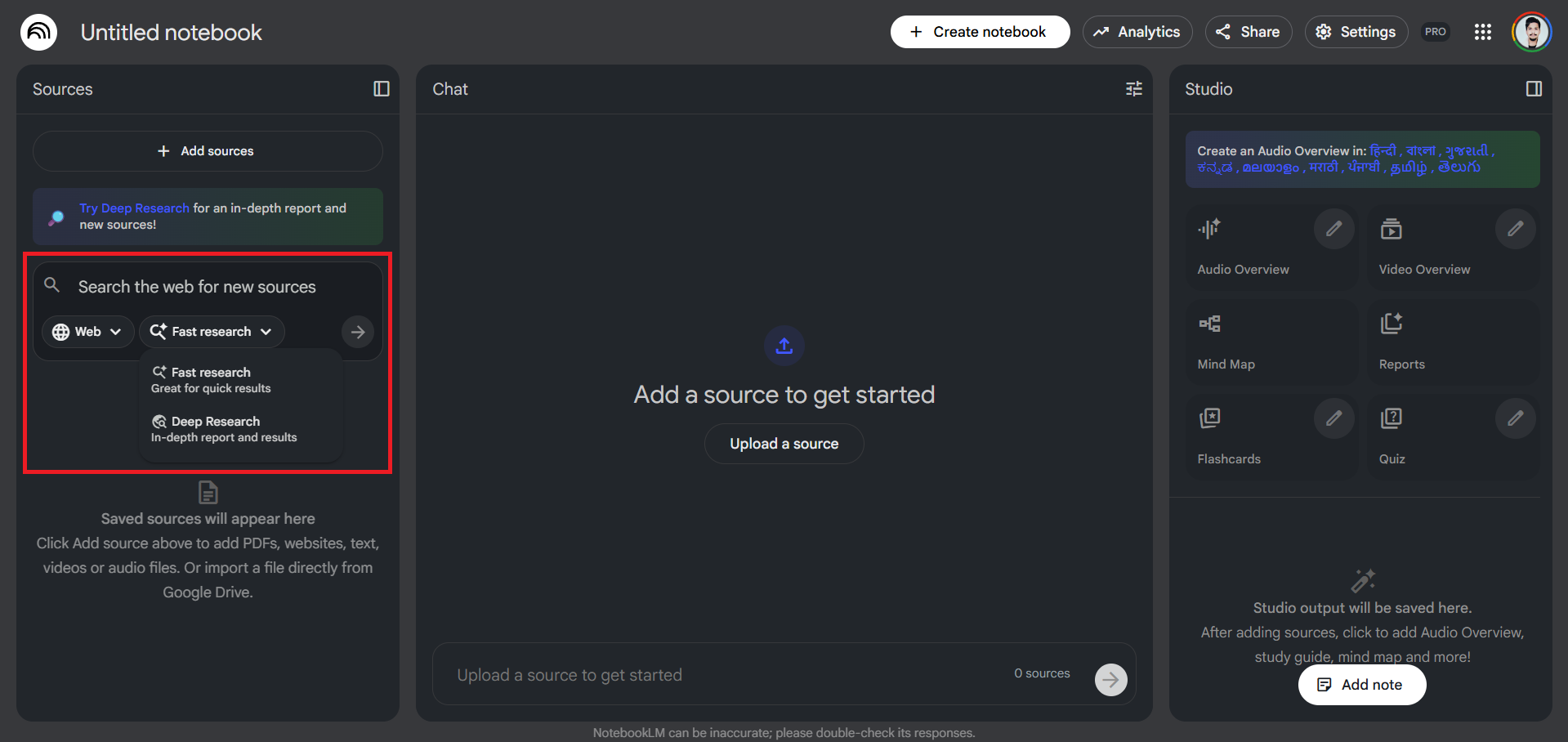
Step 4: Choose Deep Research and enter the topic you want to conduct research on, and submit. My topic was: Latest breakthroughs in AI agents and agentic AI.
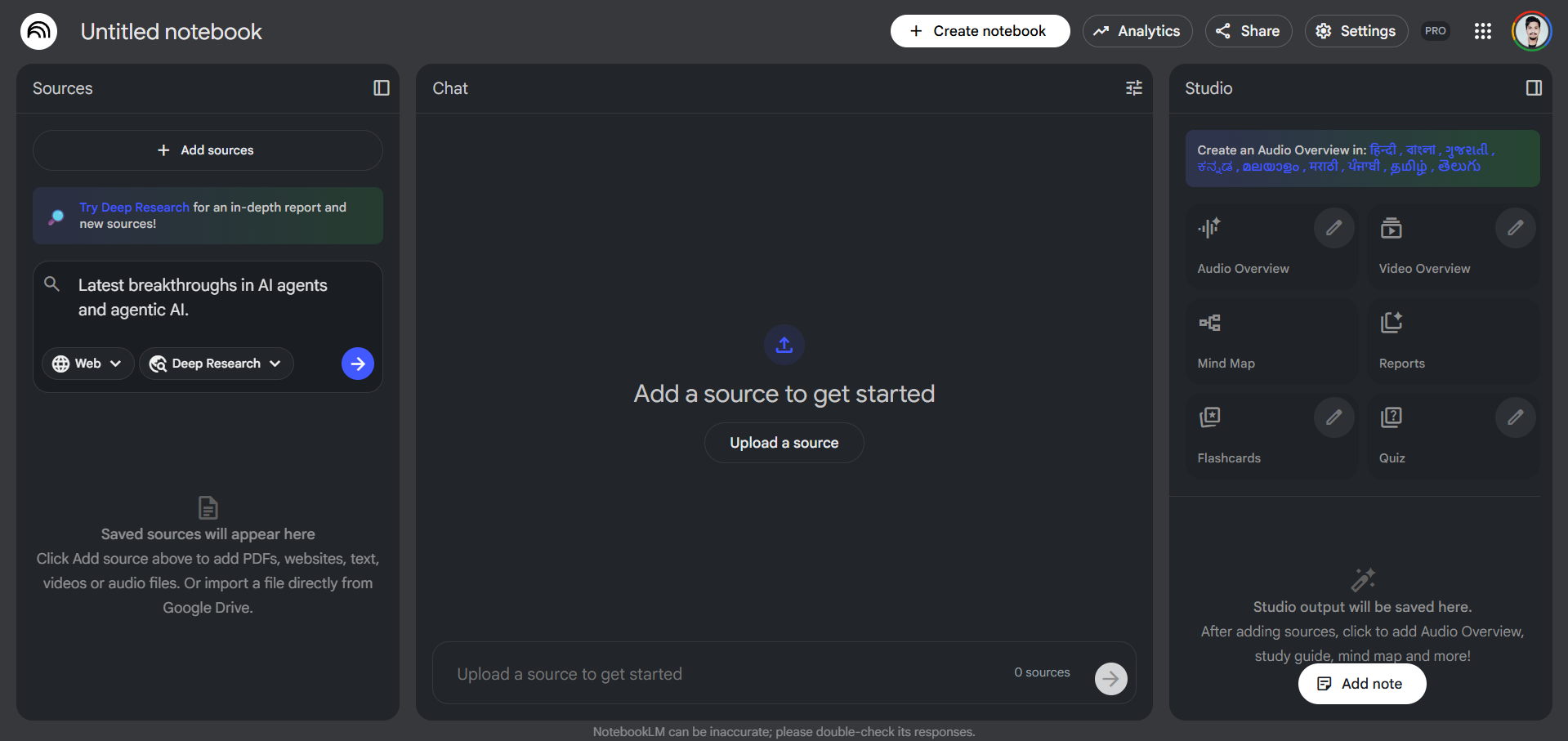
Step 5: The deep research agent will start by planning and then create 5 steps, which include analyzing websites and writing the report.
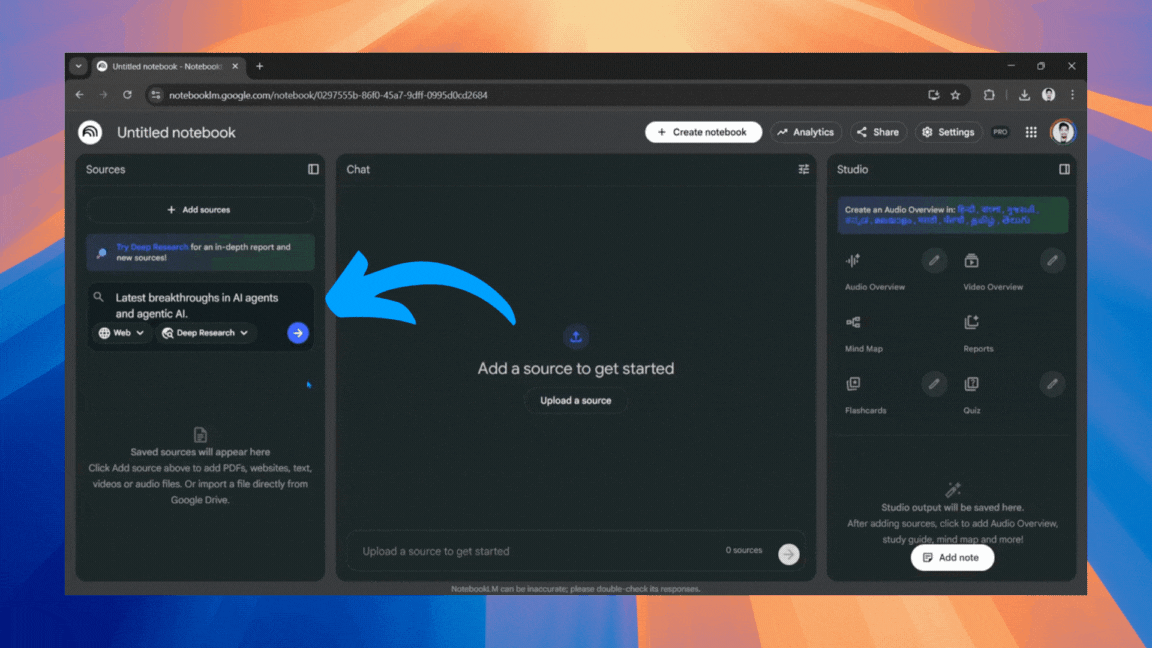
Step 6: Once the research is complete, you can choose to view the reports and sources or import everything directly. Now, you can start chatting with your newly added sources.
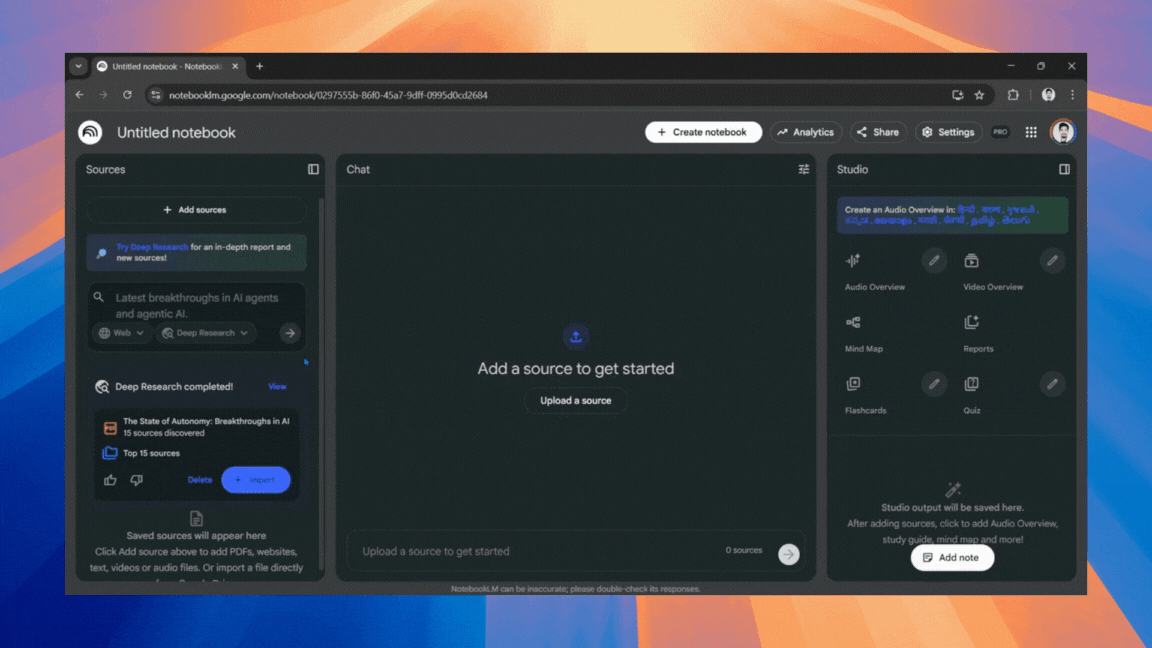
In Conclusion:
A deep research agent doesn't magically solve research. You still need to ask good questions, spot weak sources, and decide what to do with the answers. What is good about Deep research in NotebookLM is that you don't need to spend hours searching for resources, and you can save your time for interpretation and decisions. NotebookLM's new Deep Research and expanded file support make it a more interesting, meaningful, and useful tool. Try it now and see if it makes a difference.
💡 For Partnership/Promotion on AI Tools Club, please check out our partnership page.


